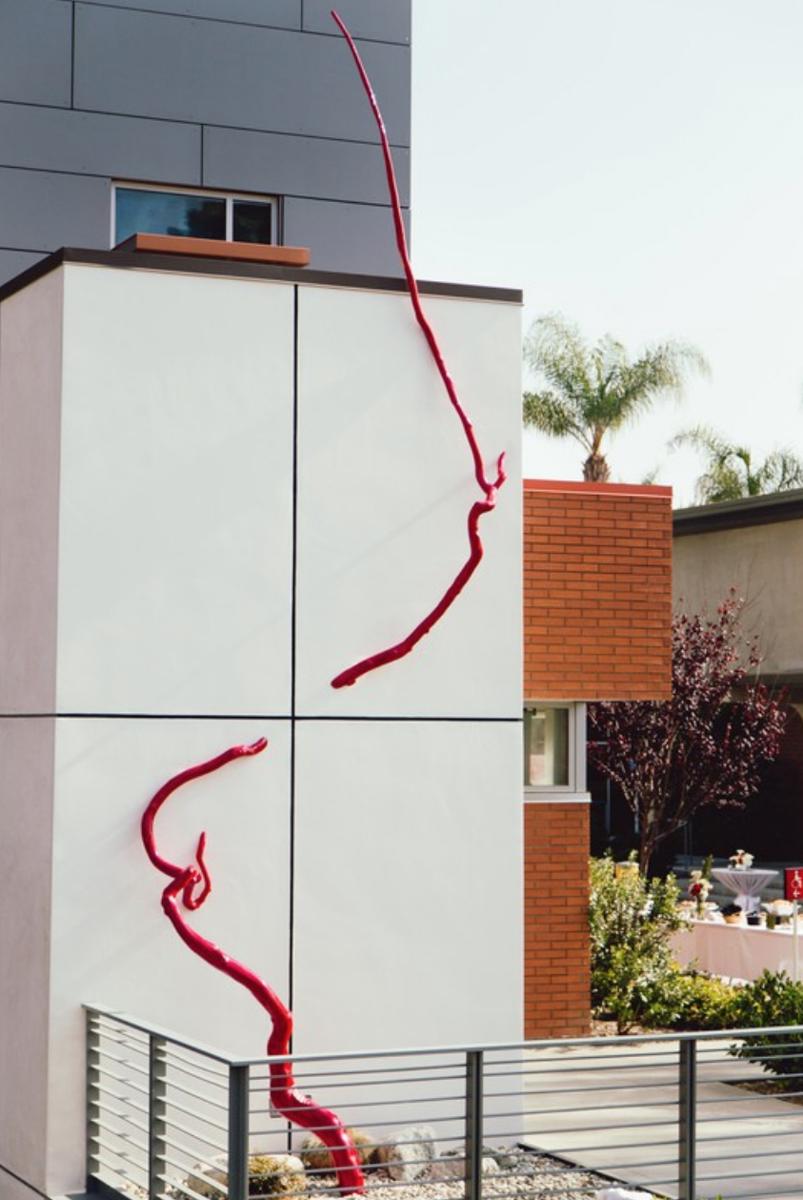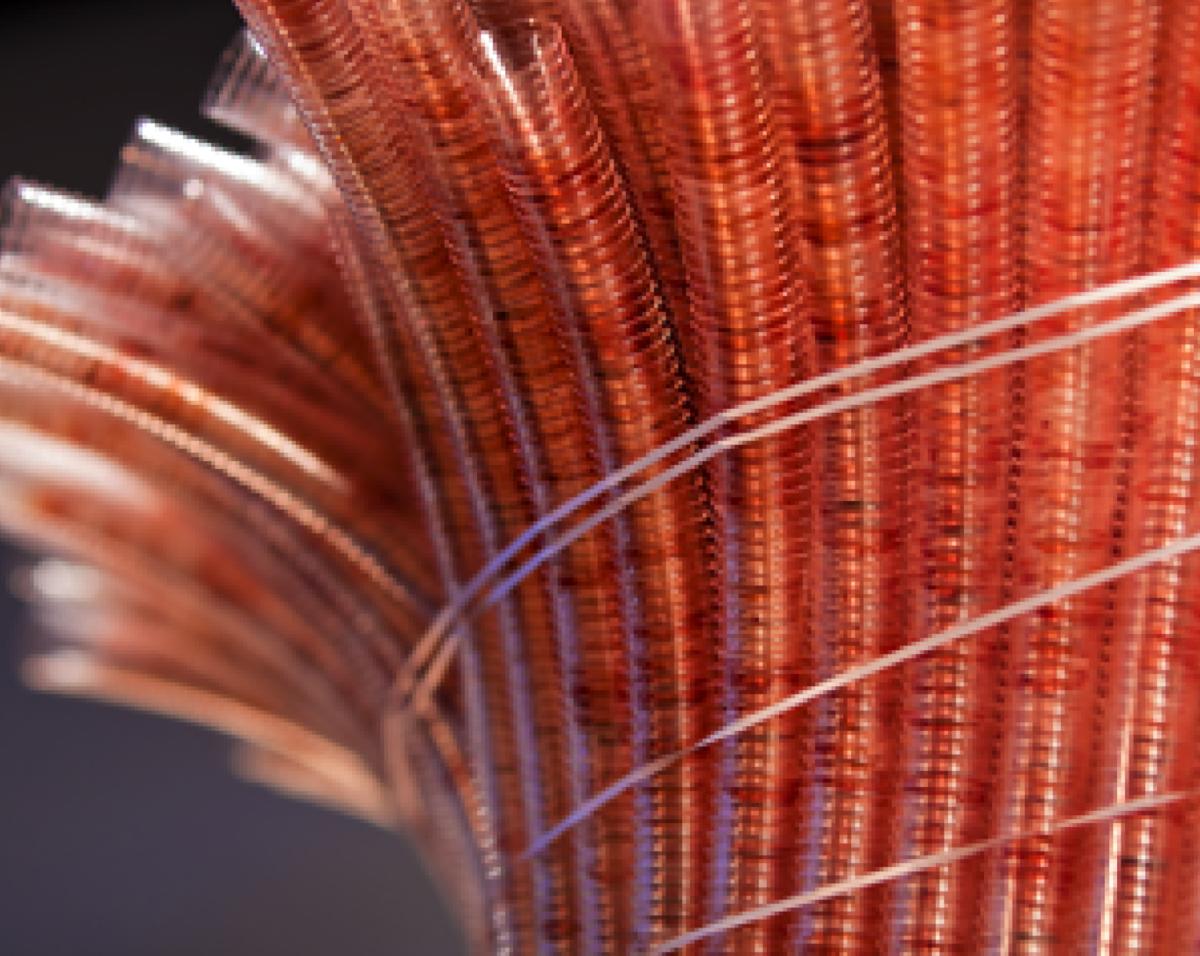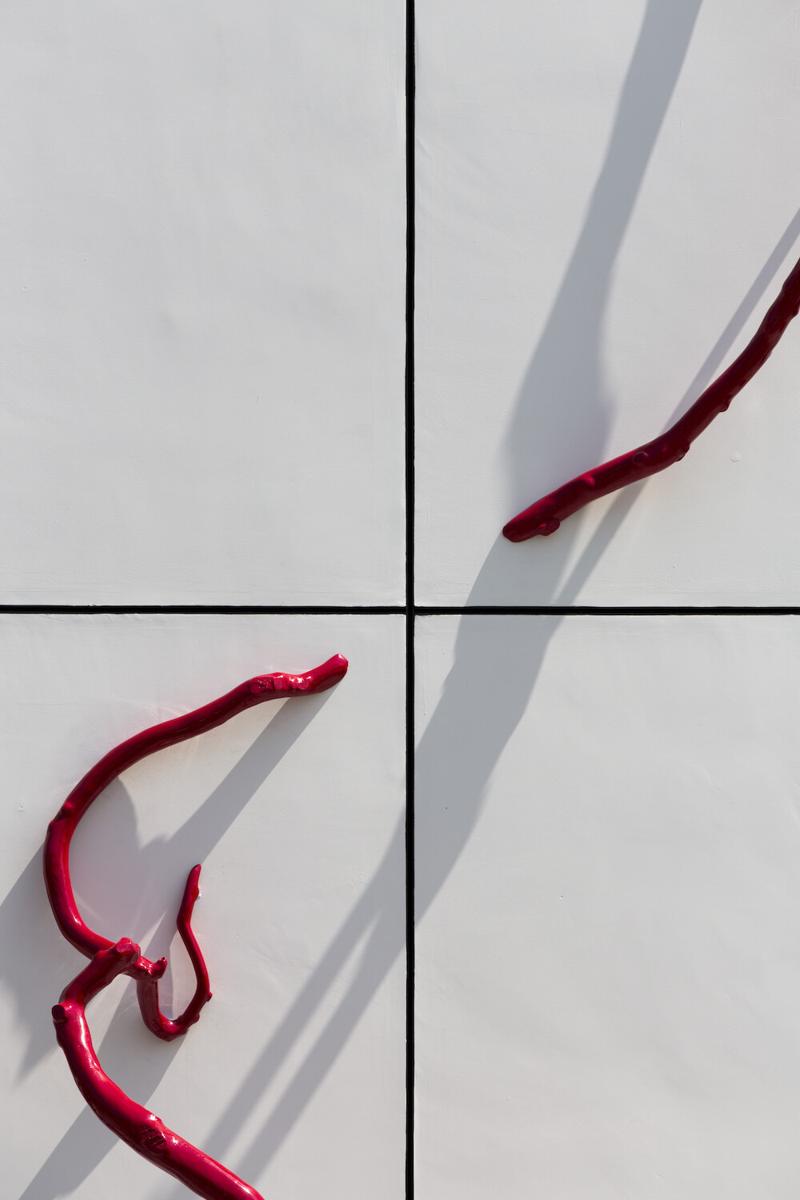March 23: “Abide in Me, and I in You”
♫ Music:
Day 35 - Tuesday, March 23
Title: “ABIDE IN ME, AND I IN YOU”
Scripture: John 15:1-17
“I am the true vine, and My Father is the vinedresser. Every branch in Me that does not bear fruit, He takes away; and every branch that bears fruit, He prunes it so that it may bear more fruit. You are already clean because of the word which I have spoken to you. Abide in Me, and I in you. As the branch cannot bear fruit of itself unless it abides in the vine, so neither can you unless you abide in Me. I am the vine, you are the branches; he who abides in Me and I in him, he bears much fruit, for apart from Me you can do nothing. If anyone does not abide in Me, he is thrown away as a branch and dries up; and they gather them, and cast them into the fire and they are burned. If you abide in Me, and My words abide in you, ask whatever you wish, and it will be done for you. My Father is glorified by this, that you bear much fruit, and so prove to be My disciples. Just as the Father has loved Me, I have also loved you; abide in My love. If you keep My commandments, you will abide in My love; just as I have kept My Father’s commandments and abide in His love. These things I have spoken to you so that My joy may be in you, and that your joy may be made full. “This is My commandment, that you love one another, just as I have loved you. Greater love has no one than this, that one lay down his life for his friends. You are My friends if you do what I command you. No longer do I call you slaves, for the slave does not know what his master is doing; but I have called you friends, for all things that I have heard from My Father I have made known to you. You did not choose Me but I chose you, and appointed you that you would go and bear fruit, and that your fruit would remain, so that whatever you ask of the Father in My name He may give to you. This I command you, that you love one another.
Poetry:
Those Winter Sundays
by Robert Hayden
Sundays too my father got up early
and put his clothes on in the blueblack cold,
then with cracked hands that ached
from labor in the weekday weather made
banked fires blaze. No one ever thanked him.
I’d wake and hear the cold splintering, breaking.
When the rooms were warm, he’d call,
and slowly I would rise and dress,
fearing the chronic angers of that house,
Speaking indifferently to him,
who had driven out the cold
and polished my good shoes as well.
What did I know, what did I know
of love’s austere and lonely offices?
ABIDE IN ME, AND I IN YOU
As part of Jesus’ “farewell discourse,” he uses an extended metaphor of the vine and the branches as he implores the disciples to abide and remain in him upon his departure. He indicates that the act of “abiding” (a word that appears nine times in the passage, sometimes connected to “in my love”) is an imperative for his followers as it is the command to “love one another” (15:12, 17). But there is more than a command in the metaphor of the vine. Embedded in his teaching about abiding, remaining, and loving, Jesus emphasizes his remaining in us (15:4) as well as his love for us (15:9).
If we have history in the church, we’re familiar with the spiritual disciplines, and their role in how disciples might abide in the vine. In order to abide, we immerse ourselves in Scripture, prayer, repentance, and solitude. And there is an ethical element involved in our obedience to his commands. But let us not forget the wonder of the image: fruit blossoming from a woody branch to flourish in delicious glory. The metaphor of abiding, therefore, most notably reveals something mysterious, transformative, miraculous on the part of the vine and vinedresser rather than the branches. If there is some beauty in our lives, it is the result of this wondrous mystery, for we are only woody branches. Let us not think too much of our work, then, for the work is the Lord’s. As he prunes, he works a miraculous transformation in us. And Jesus’ words remind us that found within the imperative of abiding, obeying, and loving, is the glimmer of a promise: His faithfulness, His friendship, and the fullness of our joy.
It’s no wonder that Jesus’ command that we love one another is so inextricably connected to our willingness to abide in him. Could there be any other human act more miraculous and life-altering than loving our brothers and sisters with the kind of love that he has for us? Like the image of the vine, the act of loving one another is simultaneously beautiful and mysterious. As today’s poem demonstrates, to love well is not self-serving, but sacrificial; it is not measured, but extravagant; it is not human, but divine. How else might we be able to show this love but through our connection to the vine and through our devotion to one another? While the True Vine art piece on Biola’s campus depicts the foundation of our faith: Jesus as a strong and hearty vine, the work Tabernacle denotes an image of the believers who abide in that vine, beautifully illustrating the power of one-anotherness as those who partake in his sacrifice through communion.
Jesus’ metaphor of the vine shows us that the love of God is redemptive, sacrificial, transformational, and communal. He invites the disciples—and by extension, us—into steadfast fellowship with him, and he promises to forever change us. And so, like Simon Peter in John 6, we answer the call to abide. For, to whom else shall we go? He has the words of eternal life.
Prayer:
Oh Lord, your love is mighty, and your mercy is great. Teach us to see how futile our efforts are outside of remaining in you. Help us to know how much you love us, how powerfully you can transform us, and how tenderly you love others through us. Walk with us, Lord, and bind our wandering hearts to you.
Amen
Christine Watson
Instructor, English Department
Biola University
For more information about the artwork, music, and poetry selected for this day, we have provided resources under the “About” tab located next to the “Devotional” tab.
About the Artwork #1:
Tabernacle (two views)
Denise Kufus Weyhrich
2010
70,000 communion cups
25” plexiglass disk, seven silver ribbons
3’ x 3’
Collection of the Sasse Museum of Art
Upland, California
Photograph by Jeff LeFever
Weyhrich’s work Tabernacle, traditionally known as the place in which God dwells in the Old Testament, here represents a community blessed by the gift of grace and forgiveness given to us by God. The entire piece is based on Jewish numerology and Christian symbolism, with the number seven being the number of completion; there are seven ribbons and 70,000 communion cups collected. The seventh ribbon runs through each stack of cups and attaches to the ceiling, symbolically representing the prayers of saints ascending to the heavens as sometimes illustrated in Medieval manuscripts. The artist’s creative process involved a year and half of weekly gathering, drying, and stacking 70,000 communion cups before being assembled together to create this piece. Each cup was separated and counted in pairs of 2 (witness) and 3 trinity to dry first then amassed into the veins of columns that make up Tabernacle. Weyhrich frequently amasses used objects or belongings for her work as a quest for authenticity and as a way of recording the distinct land past lives of others.
https://sasseartmuseum.com/tabernacle/
About the Artist #1:
Denise Kufus Weyhrich is an artist, curator, and educator in Orange, California. She taught graphic design at California State University at Long Beach and Chapman University until her retirement in 2004. Weyhrich was the founding professor of the B.F.A. program at Chapman University in Orange, California. Since 2003, she has been the co-curator of SEEDS Fine Art Exhibits, a nonprofit that transforms galleries into sacred spaces with conceptual exhibits. In her personal work, Weyhrich explores themes of the balance of life, health, and healing. By exploring those places of suffering and sharing common human experiences through authentic forms, her art resonates with the quest for authenticity and honesty. Human forms are substituted with used found objects that bear the markings of a life well-lived.
http://deniseweyhrich.com/k/Denise_Weyhrich.html
www.seedsfineart.org
https://sasseartmuseum.com/tabernacle/
http://deniseweyhrich.com/k/Bread_%26_Wine_Series.html
About the Artwork #2:
True Vine
Theodore Prescott
2015
Cast bronze with painted automotive finish
18 ft. tall
Exterior elevator shaft wall of the Talbot East building
Biola University
Gift of the Long Family Foundation
Artist Theodore Prescott was commissioned in 2015 by the Long Family Foundation to create the sculpture True Vine to grace the campus of Biola University. Prescott was inspired by teachings in the Gospel of John referencing how vines reveal a life dependent on Christ—particularly John 15, in which Jesus identifies himself as the “true vine” and his Father as the vine grower. “My goal has been to make a beautiful and striking piece of contemporary art that speaks visually and poetically to the viewer about the mysterious living reality found in Christ’s words and his cross,” said Prescott. True Vine is located on the elevator shaft wall in front of the Talbot East building—the home to Biola’s Talbot School of Theology—and was designed to interact with the form and volume of the shaft, which has an incised cross form.
For a video interview with University Curator Gallery Director/Public Art Curator Jeff Rau and artist Ted Prescott, click here.
About the Artist #2:
Theodore Prescott is a sculptor and writer who lives near Harrisburg, Pennsylvania. He chaired the art program at Messiah College in Grantham, PA, and retired as a Distinguished Professor of Art. Prescott was one of the founders of CIVA, Christians in the Visual Arts. He served as its president for two terms and edited its triennial publication for more than a decade. His articles on art have appeared in several publications, including American Arts Quarterly, Image Journal, and The New Criterion. Prescott’s sculpture is characterized by an interest in material substances and their poetic and associative nature. He is versatile in the use of traditional sculptural materials like stone, wood, and metals, but also employs unconventional materials like coal, honey, and salt. The forms of his work are derived from modern and contemporary sculpture, but his subject matter is often drawn from the Christian tradition. He has completed several commissions, including this sculpture for Biola University, and has work both in private and public collections. He and his wife Catherine live in an old farmhouse in rural Pennsylvania and love having their four grandchildren visit.
tedprescottsculpture.com
About the Music:
“Abide in Me” from the album Abide in Me (Single)
Lyrics:
I am the Vine you are the branch
Do not forsake Me
Come and reside with Me
And I’ll show you My glory
Abide in Me
I am the bread of life with Me
You won’t go hungry
I am the way I am the truth
Receive My mercy
Abide in Me
Stay close don’t let go
For the seed I plant
Brings peace that always grows
Stay close don’t let go
Abide in Me
I am the first I am the last
I hold the middle
I am the door come enter in
To peaceful meadows
Abide in Me
About the Lyricist/Composer/Performer:
Andrew Marcus is a two-time GMA Award–winning singer/songwriter/worship artist based in Vancouver, British Columbia. Andrew has had the privilege of sharing the stage with Mercy Me, Leeland, Phil Wickham, Starfield, Manafest, and many others. When he travels, Marcus’ passion is helping coach and train the next generation of leaders within the church by conducting worship music training workshops. He is currently completing his first book to help equip songwriters and worship leaders within a church setting. He has also released a series on PureFlix called Sharing the Road, an entertaining resource where he drives around different cities with influential artists and producers to talk about life, music, ministry, and tips on leading worship! Andrew is currently serving as the full-time music pastor at CA Church in Coquitlam, British Columbia, Canada.
http://www.andrewmarcusmusic.com/
About the Poet:
Robert Hayden (1913–1980) was the first African American to be appointed as Consultant in Poetry to the U.S. Library of Congress. Hayden’s formal, elegant poems about the Black historical experience have earned him a number of major awards. Poet Frederick Glaysher states in his introduction of Hayden’s Collected Prose that “Robert Hayden is now generally accepted as the most outstanding craftsman of Afro-American poetry.” The historical basis for much of Hayden’s poetry stemmed from his extensive study of American and Black History. Other influences on Hayden’s development as a writer were poets W. H. Auden and Stephen Vincent Benét. Hayden spent twenty-three years teaching at Fisk University in Nashville, Tennessee, where he was a professor of English, before he ended his career at the University of Michigan.
https://www.poetryfoundation.org/poets/robert-hayden
https://en.wikipedia.org/wiki/Robert_Hayde
About the Devotion Author:
Christine Watson
Instructor
English Department
Biola University
Christi Watson teaches in Biola’s English Writing Program and is currently working on her doctorate in higher education at Azusa Pacific University. She researches problems faced by historically underserved student populations, as well as instructional design models exploring how writing practices transfer across disciplinary boundaries. Christi has also served as assistant co-director of the writing program and coordinates its Celebration of Student Writing. In addition to her work as scholar-practitioner, Christi enjoys travel, the beach, and spending time with her husband, Phil, and her two kids, Ally and Micah.




